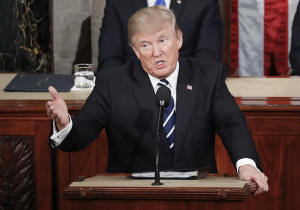|
The U.S. Constitution requires that the president updates
Congress and recommends policies, although the founding document
doesn't specify precisely when that address should take place.
Usually, presidents will deliver those remarks in January or
February, reflecting on events of the previous year and
outlining their policy priorities for the coming one. The
message used to be known as “the President’s Annual Message to
Congress.” In 1934, President Franklin D. Roosevelt began
referring to it as the “Annual Message to Congress on the State
of the Union."
Shortly after he was sworn in for his first term in 1981, Reagan
addressed a joint session of Congress, remarks that were called
“Address Before a Joint Session of the Congress on the Program
for Economic Recovery," according to The American Presidency
Project, at the University of California at Santa Barbara.
Presidents George H.W. Bush and Bill Clinton followed suit in
their own first years in office, with 1989 and 1993 messages
both entitled “Administration Goals.” In 2001, President George
W. Bush's speech was his “Budget Message."
According to the American Presidency Project, the impacts of
these first-year speeches should be considered to have the same
heft as the State of the Union addresses that follow in
subsequent years. And, just like the State of the Union address,
the opposing party to the one that occupies the White House
gives a brief speech in response, which, like the president's
remarks, is televised. This year's will be delivered by
Democratic Sen. Elissa Slotkin of Michigan.
All contents © copyright 2025 Associated Press. All rights
reserved |
|




